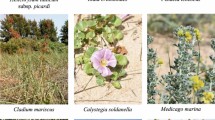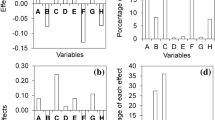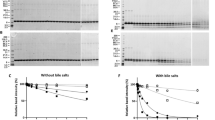Abstract
AN investigation into the anthelmintic action of hexyl resoreinol, in particular as modified by the presence of soaps, leads us to suggest a simple and apparently general explanation of the numerous, often contradictory, results previously recorded upon the biological activity of soap/phenol systems. (The term 'soap' here covers both the natural soaps and the synthetic detergents.)
This is a preview of subscription content, access via your institution
Access options
Subscribe to this journal
Receive 51 print issues and online access
$199.00 per year
only $3.90 per issue
Buy this article
- Purchase on Springer Link
- Instant access to full article PDF
Prices may be subject to local taxes which are calculated during checkout
Similar content being viewed by others
References
Schulman and Rideal, Proc. Roy. Soc., B, 122, 29 and 46 (1937).
Frobisher, J. Bact., 13, 163 (1927).
Billard and Dieulafe, C.R. Soc. Biol., 56, 146 (1904).
Bellows and Gutmann, Arch. Ophthalmology, 30, 312 (1943) (available in abstract only C.A. 38, 791 (2)).
For example, Tilley and Schaffer, J. Infect. Diseases, 37, 359 (1925). Hampil, J. Bact., 16, 287 (1928).
Rideal, Trans. Faraday Soc., 33, 1081 (1937). Hurst, Trans. Faraday Soc., 39, 390 (1943).
Author information
Authors and Affiliations
Rights and permissions
About this article
Cite this article
TRIM, A., ALEXANDER, A. Effect of Soaps and Synthetic Wetting Agents upon the Biological Activity of Phenols. Nature 154, 177–178 (1944). https://doi.org/10.1038/154177a0
Issue Date:
DOI: https://doi.org/10.1038/154177a0
Comments
By submitting a comment you agree to abide by our Terms and Community Guidelines. If you find something abusive or that does not comply with our terms or guidelines please flag it as inappropriate.



